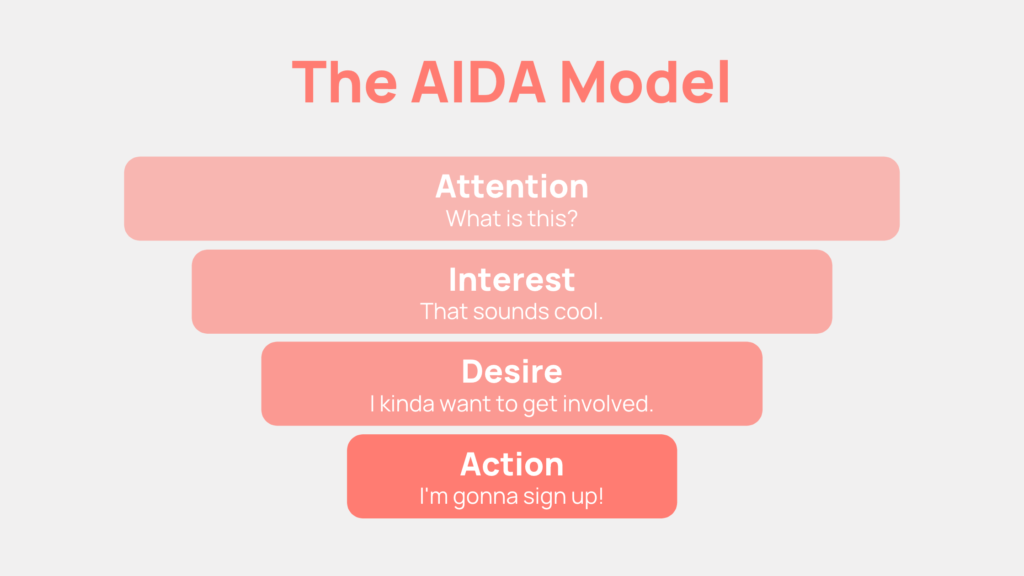Mentoring programs have become an invaluable resource for personal and professional development. They offer individuals the opportunity to gain guidance and support from experienced mentors who can help them navigate their chosen field. However, in order for a mentoring program to be successful, it needs to have a strong recruitment strategy in place because these programs obviously need participants. Having said that, getting those participants is something that doesn’t always come easy. We get asked about how to recruit participants into mentoring programs all the time, and that’s because this part of the journey can be a bit daunting, especially for first-time program coordinators.
Mentorloop has been part of tons of programs over the years, so we’ve got ideas that we think would help program coordinators who might be a bit overwhelmed with this aspect of managing a program, especially those of you who are new to this. In this article, we will explore the basics of mentoring program recruitment and provide beginners with the insights needed to get started.

Developing a Mentor Recruitment Strategy
When it comes to recruiting mentors for your program, it’s important to have a well-thought-out strategy in place. Here are some key steps to consider:
1. Identify your target mentors based on your program’s goals
Before you begin recruiting, it’s important to identify the type of mentors you are looking for. Consider the specific skills, experiences, and background your program requires.
For example, if your community mentoring program focuses on helping underprivileged youth learn coding skills, you may want to target experienced software engineers or senior computer science students who have a passion for giving back to the community. By identifying your target audience, you can tailor your recruitment efforts to attract mentors who possess the necessary expertise and share the same values as your program.
2. Create a compelling message
Your recruitment message needs to clearly articulate the benefits of becoming a mentor. Think about what motivates potential mentors and highlight how your program can help them achieve their goals.
When crafting your message, consider emphasizing the personal and professional growth opportunities that mentoring can provide. Highlight the chance to make a positive impact on someone’s life, develop leadership skills, and expand their network within the industry. By showcasing the benefits of mentorship, you can attract individuals who are not only passionate about helping others but also eager to enhance their own skills and experiences.
3. Utilize your network
Start by reaching out to your existing network to find potential mentors. You can also leverage social media platforms, professional organizations, and industry events to expand your reach. Networking is a powerful tool when it comes to recruiting mentors. Reach out to colleagues, friends, and acquaintances who may know individuals interested in becoming mentors. Additionally, make use of social media platforms to spread the word about your program and attract potential mentors.
If your program is one for the workplace, you can also engage with ERGs or subcommittees and their leaders, as well as your organization’s top leadership. If you have an industry association program, events can be your friend when it comes to recruiting mentors.
By tapping into your network and utilizing various platforms, you can cast a wider net and increase your chances of finding mentors for your program.
4. Offer incentives
Consider offering incentives to attract mentors. This could include recognition, training opportunities, or networking events.
Incentives can play a significant role in attracting mentors to your program. Recognize the efforts of your mentors by highlighting their contributions through awards or public acknowledgments. Provide ongoing training opportunities to help mentors enhance their mentoring skills and stay up-to-date with industry trends. Organize networking events where mentors can connect with other professionals in their field. By offering incentives, you not only show appreciation for your mentors’ dedication but also create a supportive and rewarding environment that encourages long-term commitment.
5. Streamline the application process
Make sure the application process for potential mentors is clear and straightforward. Eliminate unnecessary barriers to entry and provide clear instructions for how to apply. Avoid lengthy forms or complicated requirements that may discourage individuals. By streamlining the application process, you remove unnecessary obstacles and make it more convenient for mentors to join your program.
On Mentorloop, we make it incredibly easy to sign up to a mentoring program. Participants can sign up and build their profiles in minutes so they can get right to building mentoring relationships straight away.
Developing a Mentee Recruitment Strategy
Here are a few tips on how to recruit mentees for your mentoring program:
1. Identify your target mentees based on your program’s goals
Clearly outline the goals and purpose of your mentoring program. Determine the specific skills, knowledge, or areas of development that mentees can expect to gain. And this will inform the characteristics or even the demographics of the mentees you want to reach out to.
2. Develop a compelling value proposition and communicate it well
Highlight the benefits and value that mentees will receive by participating in your program. Clearly articulate how the program will help them achieve their goals and advance in their chosen field. [link to messaging article] Emphasize the positive impact mentoring can have on career development and personal growth, as well as other benefits that come from your specific program goals.
Take advantage of all the assets available to you and ensure as many potential mentees as possible know what your program is about, when they can sign up, and what they can expect.
Watch the video below for tips on using assets you already have to recruit participants for your mentoring program.
3. Streamline the application process
Design a simple and straightforward application process for potential mentees. Collect relevant information such as their background, career goals, and areas of interest. Similar to your strategy with mentors, eliminating unnecesary barriers to entry makes it so mentees are more likely to go through with sssigning up.
The AIDA Model and How to Use it for Mentoring Program Recruitment
It’s time to introduce you to our good friend, AIDA.
This super-simple model will help you get an idea of the journey you should be taking your would-be participants on throughout your recruitment campaign.
The AIDA model is a proven marketing framework that can also be applied to mentoring program recruitment. It stands for Attention, Interest, Desire, and Action, and is designed to guide individuals through the decision-making process. For our purposes – recruiting participants for mentoring programs – it looks like this:

Attention
Basically, tell your potential mentors and mentees what the program is all about. To do this, you need to clearly articulate the value your program offers. Cover all the basics – what’s the program called, when would sign-ups open, who is eligible to participate – that kind of thing, because potential participants can’t get interested in something they know nothing about. This is also where you should start highlighting any distinctive features or success stories that make your program stand out.
Interest
Once you have successfully captured their attention, you can move on to the next stage, Interest. This is the part where you make the program sound great to potential mentors and mentees! Tell them why they should check the program out.
Provide more detailed information about the benefits mentors and mentees can expect to receive. Get them interested by telling them all about the benefits and what they’ll get out of it – personal growth, skill development, and networking opportunities, to name a few. By showcasing these potential rewards, you can further engage potential mentors andd mentees and increase their interest in your program.
Desire
Now it’s time to create a sense of desire in potential participants by showcasing the positive impact the program can have on their lives. Make them want to get involved – lean into the benefits and make it real and accessible for potential participants. Make them see that actually, those benefits you told them about, they could absolutely experience for themselves.
Illustrate the transformative power of mentorship by showing real-life examples of life-changing mentoring partnerships. Famous examples are great, but if you can find Mentoring Champions in your organisation, that’s even better!
Action
Tell them how they can get involved with clear calls to Action! Here’s where you make sure that those who want to join your program find it easy to do so. Make your sign-up form or links easy to find, send some reminders, and plaster that information in places they’ll easily find it. Basically, make it effortless for them to join so it’s not a chore for them to take action on their desire to join.
By following the AIDA model, you can structure your recruitment efforts in a way that engages potential mentors and mentees and guides them towards becoming active participants in your program. By following this simple but comprehensive framework, you can be confident that your potential participants are informed, enthusiastic, and ready to make a difference through mentorship.
Crafting a Compelling Pitch to Attract Mentors
When it comes to attracting mentors, a compelling pitch is essential. Here are some key elements to include in your pitch:
- Highlight the impact: Start by emphasizing the difference mentors can make in the lives of their mentees. Share stories and examples that illustrate the positive outcomes that can result from mentoring relationships.
- Showcase benefits: Clearly articulate the benefits mentors can expect to receive from participating in the program. This could include personal growth, skill development, and expanding their professional network.
- Address concerns: Anticipate any potential concerns or objections mentors may have and address them directly in your pitch. This shows that you understand their perspective and are committed to addressing their needs.
- Highlight success stories: Share success stories from past mentors to inspire potential mentors and demonstrate the value of your program.
By crafting a compelling pitch that focuses on the impact and benefits of mentoring, you can attract mentors who are passionate about making a difference and eager to contribute to your program.
For more on getting your recruitment message right, check out our tips on this article.
In Conclusion
Obviously, this is all easier said than done. We’re very aware that this process can be daunting and overwhelming for some program coordinators, especially those running and managing one for the first time.
So if you’re keen to learn more, head over to the Mentorloop Academy for more tips and best practices from our team of mentoring experts.
We’ve also created a more in-depth guide to marketing your mentoring program and recruiting participants! It’s full of real-life examples and a bunch of templates ready for you to use. Best of all, it’s free and you can download it via the link below! We hope you find it helpful in your journey.
Good luck!





